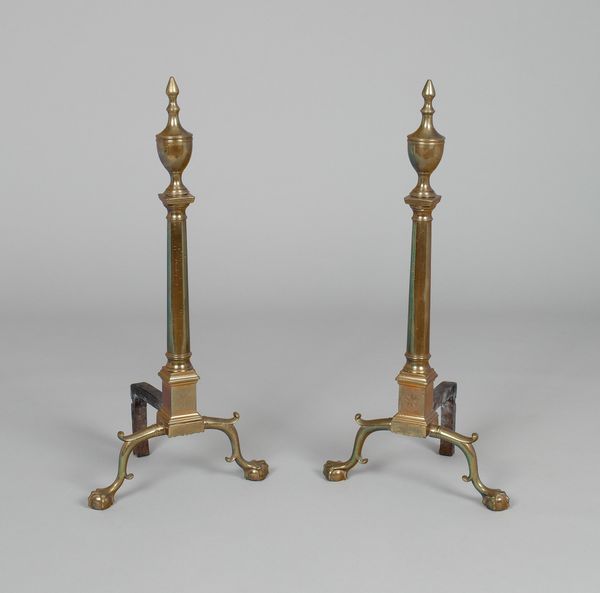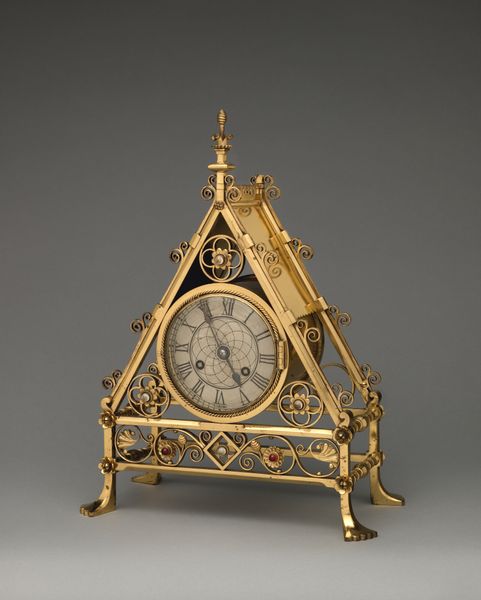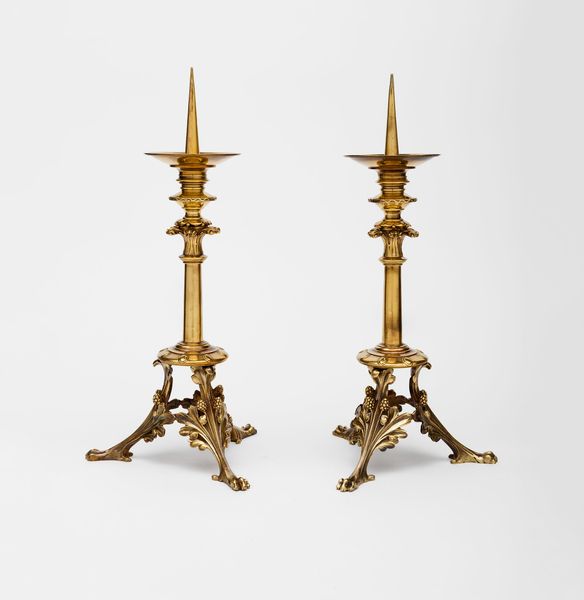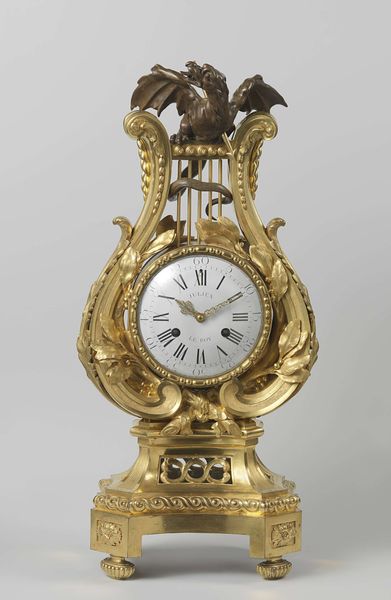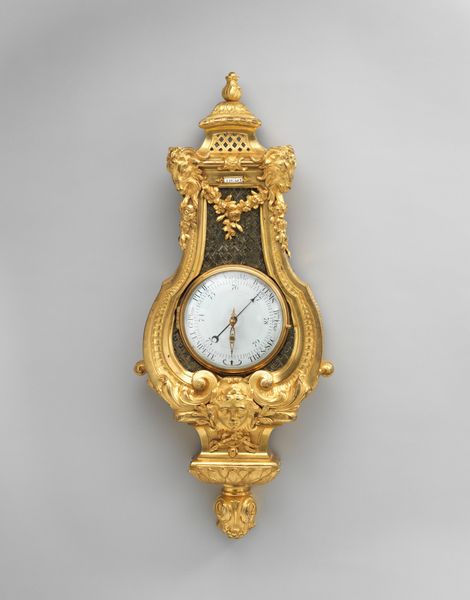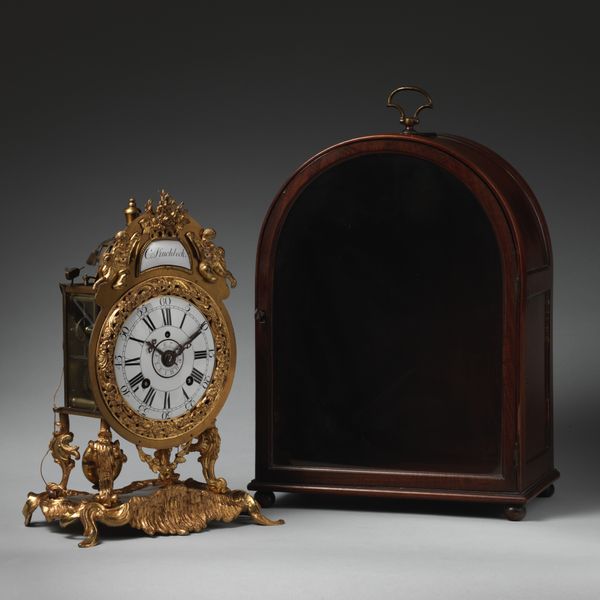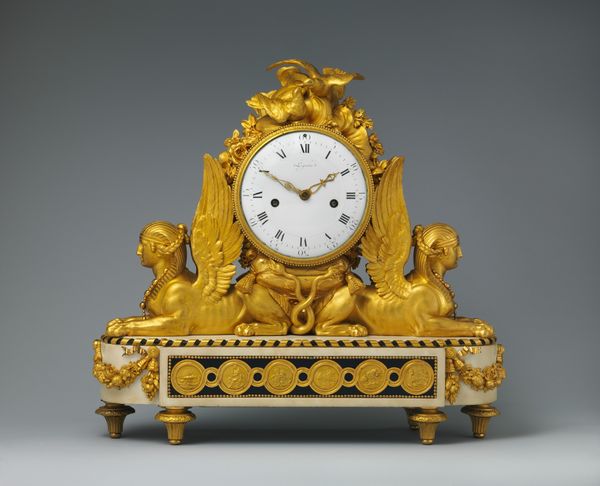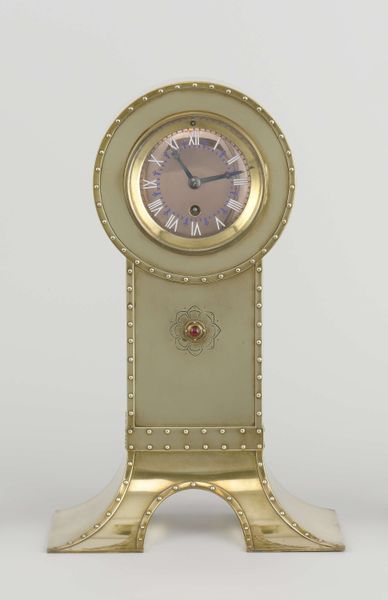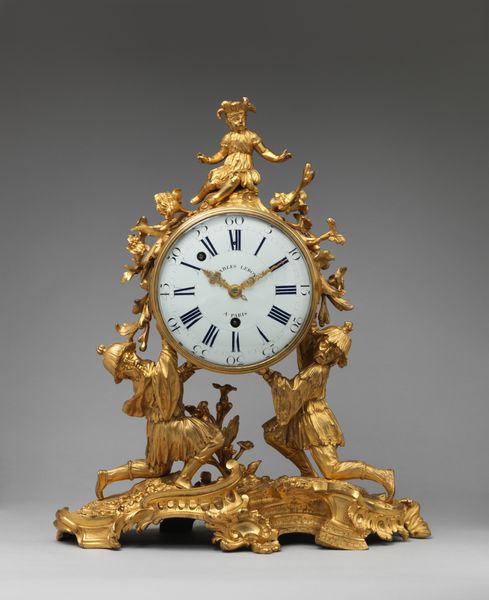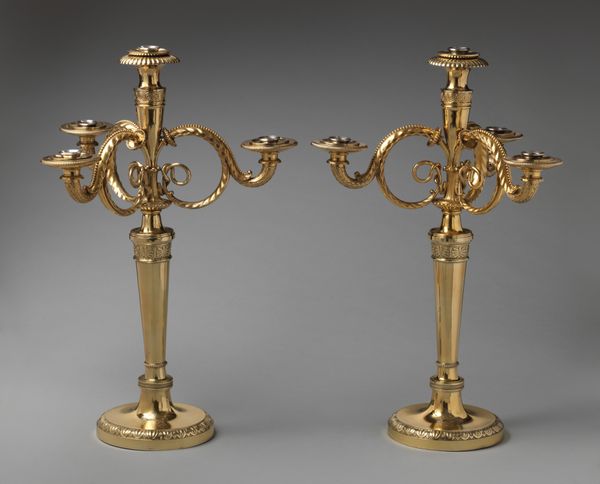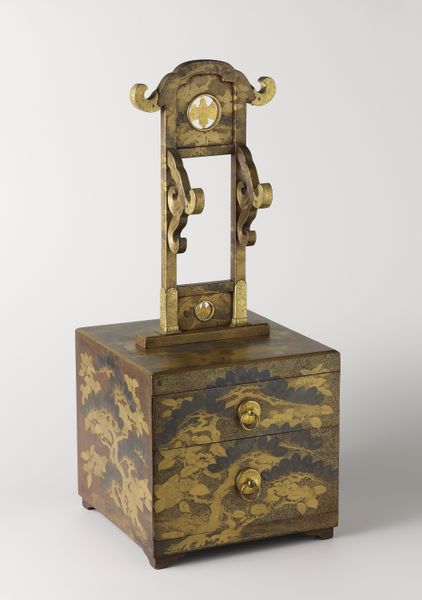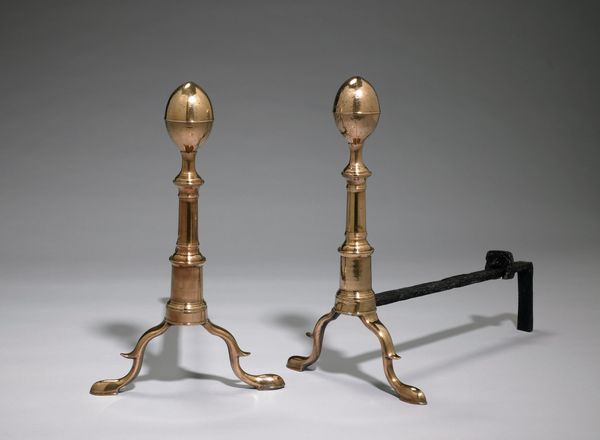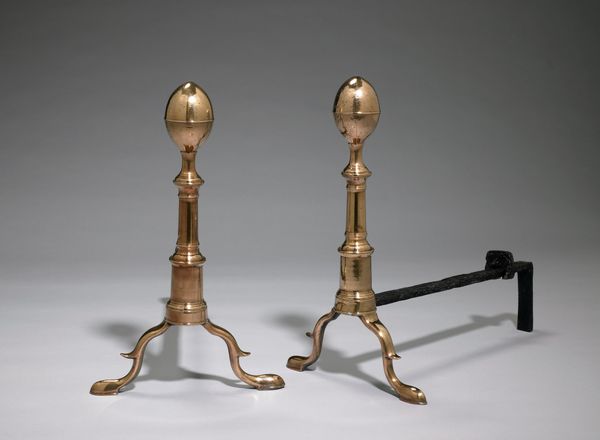
brass, metal, ceramic, sculpture
#
art-nouveau
#
brass
#
metal
#
ceramic
#
stoneware
#
sculpture
#
ceramic
#
decorative-art
Copyright: Rijks Museum: Open Domain
Curator: I am struck by the almost serene austerity of this mantle clock with its accompanying candelabra. It's believed to be designed around 1900, a moment of great transition. Editor: There is a calmness, yes. The cool ceramic and the warm brass, that soft celadon color…It's strangely soothing. It also presents, as an object, as being so firmly planted, its heavy horizontal base sections feel quite solid and functional, grounded. Curator: These pieces come from the hand of Hendrik Petrus Berlage, a name synonymous with the artistic and social currents of the Netherlands at the turn of the century. Berlage was invested in art's capacity to serve and uplift society. Editor: Tell me more about this pairing. Its arrangement is quite geometric with linear planes that resolve upward in the delicate branching of the candleholders, echoed in the subtle details edging each shape in precise repetition. I wonder, too, what semiotic approach guided his design? Curator: This design incorporates functionality, it presents the clock, the arbiter of time, flanked by sources of light. It invokes powerful themes – time, presence, future, illuminating societal norms and behaviours that could benefit from reevaluation. The clock itself is, after all, keeping time for those in proximity to it. It orders events. It perhaps alludes to time's passage and the opportunities that must either be ceased or are already missed. Editor: I do appreciate the intention. Looking again at the craftsmanship, particularly in how the materials play together, I wonder what impact this arrangement might have on one's awareness of space and light. Curator: Considering Berlage’s ideals, I think his design serves as an invitation. Perhaps to reflect on time's role and one’s own place within it. Its message certainly extends beyond aesthetics. Editor: A harmonious blend of form and intention, crafted at a moment when art and society were undeniably intertwined. Its construction lends itself well to both social and domestic functions. Curator: Precisely. The interplay between form and function allows us to contemplate societal progress. I wonder what a twenty-first-century version might look like.
Comments
rijksmuseum about 2 years ago
⋮
The design of this ensemble is sober and rational, the distinctive style of the influential Dutch architect Berlage. Connecting elements, such as rivets, are clearly visible and accentuate both the construction and the form. The broad, splayed feet resemble the base of the Eiffel Tower, completed in 1889, which was the shining example of engineering of its time.
Join the conversation
Join millions of artists and users on Artera today and experience the ultimate creative platform.
